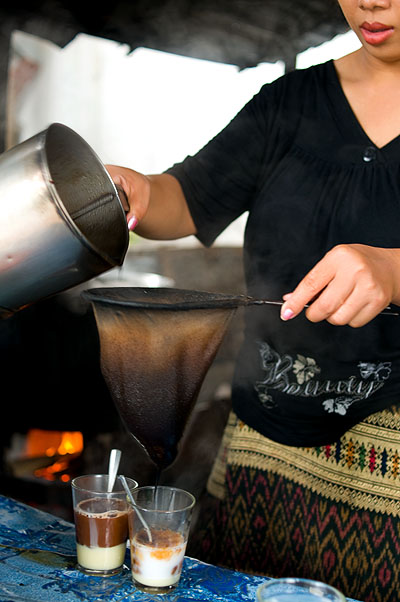 I've eaten at many, if not most of the upscale Thai restaurants in Bangkok, and have rarely, if ever, had a good meal. Nothing I ate at these restaurants was necessarily bad--no hairs were found, no surly service, nothing rotten--but rather, the food left no impression whatsoever. The general phenomenon seems to be that the more you pay for Thai food, the less flavourful it is, and the more predictable the menu tends to be.
I've eaten at many, if not most of the upscale Thai restaurants in Bangkok, and have rarely, if ever, had a good meal. Nothing I ate at these restaurants was necessarily bad--no hairs were found, no surly service, nothing rotten--but rather, the food left no impression whatsoever. The general phenomenon seems to be that the more you pay for Thai food, the less flavourful it is, and the more predictable the menu tends to be.
Exploring Banglamphu with friends on a recent Sunday, it didn't take us very long to realize that on Sunday, in Banglamphu, absolutely nothing is open. Luckily, a few days previously, I was reminded of an upscale Thai restaurant that I've always suspected might be different from the rest, so we made it up Th Dinso to Sorndaeng.
A sign out front claims that Sorndaeng has been around since 1957. A glance into the dining room shows that very little appears to have changed in 51 years: the service staff dress like soldiers, there are doilys and frumpy furniture, live lounge music (appropriately, a mild version of 'Sukiyaki' was sung at one point), and of course that most telling sign of old-school Thai elitism, a table dominated by several big-haired, silk-wearing Thai-Chinese women:

A had been eating here since she was young, and suggested we order krathong thong:

'golden baskets' with a sweet/savoury filling.
I ordered lon kapi, a savoury 'dip' served with fresh vegetables and herbs:

and yam som oh, pomelo salad:
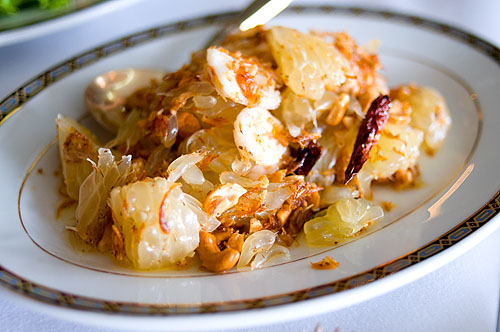
The former was a very good take on a dish that's somewhat hard to find, and the latter was simple but delicious, incorporating no more than five ingredients including deep-fried cashews, and if I remember correctly, roasted coconut.
A ordered fish maw fried with egg and bean sprouts:

a dish I didn't think I would like, but which was actually very nice, deliciously eggy and smokey, a lot like or suan.
P ordered mee krop, just to see how it would stand up to that of Chote Chitr:

It wasn't bad, but not nearly as rich, citrusy and complex as Chot Chitr's.
We had a couple other things as well, including a soup with duck and pickled lime, and the yummy crab-filled hor mok shown at the top of the post. Virtually every dish was excellent.
Sorndaeng also proved to be one of the few places I was actuallly inspired to order a dessert:
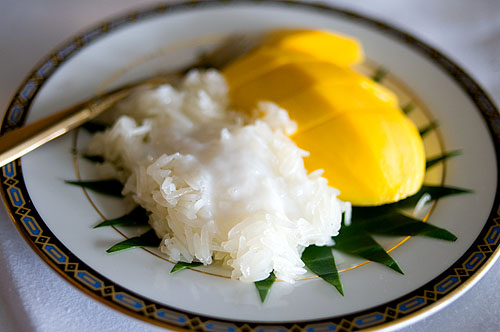
Mango and sticky rice--a Thai cliche, but still very nice, even if it wasn't peak mango season.
Finally: highly recommendable upscale Thai food.
Sorndaeng (Google Maps link) 78/2 Th Ratchadamnoen Klang 02 224 3088 10am-11pm












 If you're hungry, in Bangkok, and don't happen to have any money, I'd suggest stopping by Government House. At the moment there's a crazy party going on there with heaps of free nosh:
If you're hungry, in Bangkok, and don't happen to have any money, I'd suggest stopping by Government House. At the moment there's a crazy party going on there with heaps of free nosh:


 It's been a while since I've featured any recipes on these pages, and unfortunately, I'm not sure when I'll get a chance to do that anytime soon. Luckily, thanks to
It's been a while since I've featured any recipes on these pages, and unfortunately, I'm not sure when I'll get a chance to do that anytime soon. Luckily, thanks to  A Chinese temple in Phitsanulok. I like the colours and the reflection of light off the puddles and the bus.
A Chinese temple in Phitsanulok. I like the colours and the reflection of light off the puddles and the bus. Noodles are ubiquitous across all of Thailand, but they often take slightly different forms depending on where in the country you are. I was surprised to find quite a few different kinds of noodles on my recent trip up north. Of course, there's the famous khao soi:
Noodles are ubiquitous across all of Thailand, but they often take slightly different forms depending on where in the country you are. I was surprised to find quite a few different kinds of noodles on my recent trip up north. Of course, there's the famous khao soi:





 In addition to the
In addition to the 
 Several months' work has finally taken a tangible form. Lonely Planet's Bangkok, which I co-authored with Andrew Burke, and Thailand's Islands & Beaches, of which I wrote several chapters including Food, have finally been printed.
Several months' work has finally taken a tangible form. Lonely Planet's Bangkok, which I co-authored with Andrew Burke, and Thailand's Islands & Beaches, of which I wrote several chapters including Food, have finally been printed. A performer waiting to go onstage at a likay performance, Kamphaeng Phet.
A performer waiting to go onstage at a likay performance, Kamphaeng Phet. 






 I've been in northern Thailand for two weeks now, but Lampang is as far north as I've made it. As one goes further south within phaak nuea (northern Thailand), the language, culture and food become more like those of central Thailand, so Lampang was really my only chance to get my hands on good, authentic northern-style Thai food.
I've been in northern Thailand for two weeks now, but Lampang is as far north as I've made it. As one goes further south within phaak nuea (northern Thailand), the language, culture and food become more like those of central Thailand, so Lampang was really my only chance to get my hands on good, authentic northern-style Thai food.



 Definitely an pic that requires a bit of explanation...
Definitely an pic that requires a bit of explanation...

 Guess it wasn't that important of a prayer.
Guess it wasn't that important of a prayer.
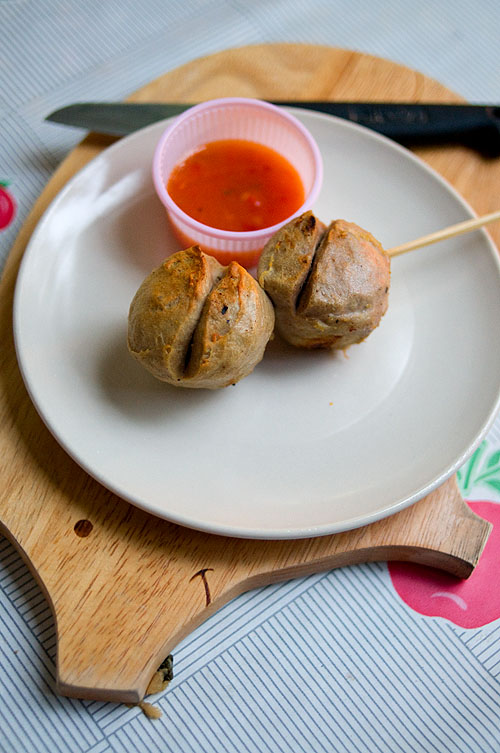 It was at Lampang's night market that I first came across look chin khiang, 'cutting board meatballs' (shown above). Several vendors were selling them, and just about everybody was eating them. Initially I was impressed by their size--roughly equivalent to a child's fist. But I also really loved how they were served. After being grilled:
It was at Lampang's night market that I first came across look chin khiang, 'cutting board meatballs' (shown above). Several vendors were selling them, and just about everybody was eating them. Initially I was impressed by their size--roughly equivalent to a child's fist. But I also really loved how they were served. After being grilled: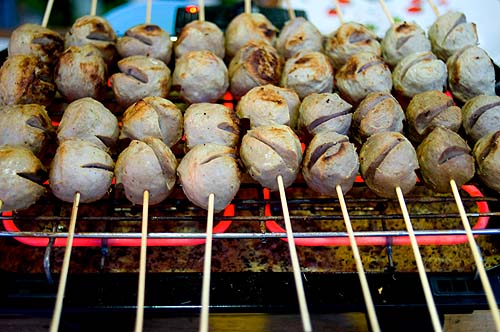
 Khun Manee is a respected maker of khao taen (pictured above), rice cakes that are deep-fried and drizzled with palm sugar, in Lampang, a city in northern Thailand that is known for the sweet.
Khun Manee is a respected maker of khao taen (pictured above), rice cakes that are deep-fried and drizzled with palm sugar, in Lampang, a city in northern Thailand that is known for the sweet.



 Am currently in northern Thailand, where khao soi (pictured above) has been flowing through my veins for the last few days. Will follow up soon with exciting, action-packed dispatches from Lampang, Sukhothai and elsewhere...
Am currently in northern Thailand, where khao soi (pictured above) has been flowing through my veins for the last few days. Will follow up soon with exciting, action-packed dispatches from Lampang, Sukhothai and elsewhere... A resident of Bangkok's Chinatown in front of his home
A resident of Bangkok's Chinatown in front of his home

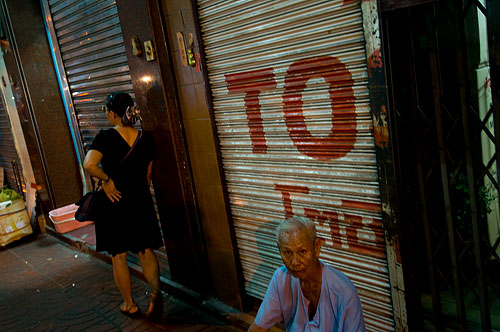
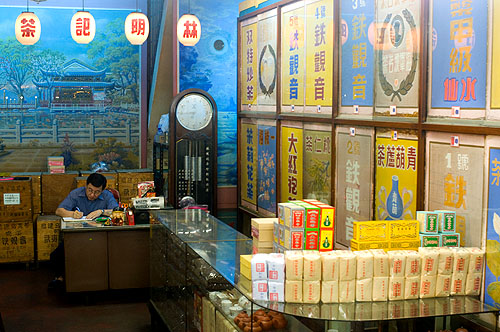

 Bang Saen, the nearest beach from Bangkok, was the topic of
Bang Saen, the nearest beach from Bangkok, was the topic of 





 Kuaytiaw khua kai, wide rice noodles fried with chicken and egg, is a dish found all over Bangkok's Chinatown. I've had it a couple times, but have never been blown away, usually finding it often too bland or too oily. However a recent peek into a normally dark alleyway revealed the best take on the dish so far.
Kuaytiaw khua kai, wide rice noodles fried with chicken and egg, is a dish found all over Bangkok's Chinatown. I've had it a couple times, but have never been blown away, usually finding it often too bland or too oily. However a recent peek into a normally dark alleyway revealed the best take on the dish so far.

 One thing I particularly love about eating out in Bangkok is the informality. I've witnessed firsthand the hoops that people have to go through simply to eat out (not to mention the prices associated with this) in most other big cities around the world, and love the fact that I can virtually waltz into just about any place in town on a whim. Come to think of it, I don't think I've ever even had to make a reservation for a restaurant in Bangkok. Until now, that is.
One thing I particularly love about eating out in Bangkok is the informality. I've witnessed firsthand the hoops that people have to go through simply to eat out (not to mention the prices associated with this) in most other big cities around the world, and love the fact that I can virtually waltz into just about any place in town on a whim. Come to think of it, I don't think I've ever even had to make a reservation for a restaurant in Bangkok. Until now, that is.








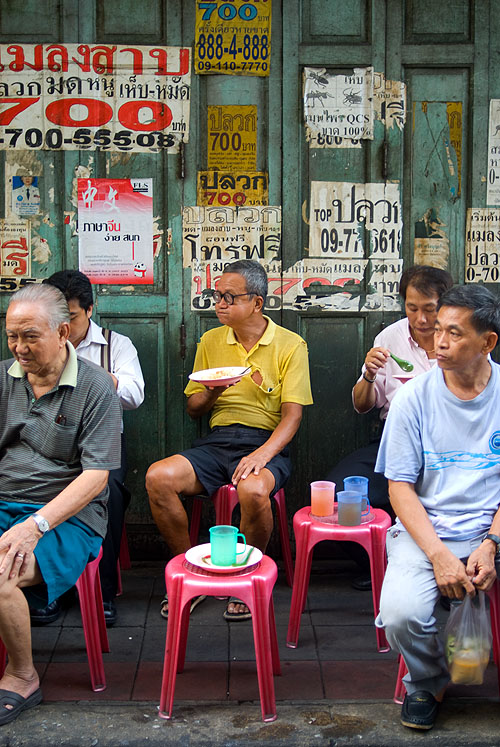 A curry dinner at Jek Pui, a popular stall in Bangkok's Chinatown that has no tables.
A curry dinner at Jek Pui, a popular stall in Bangkok's Chinatown that has no tables. 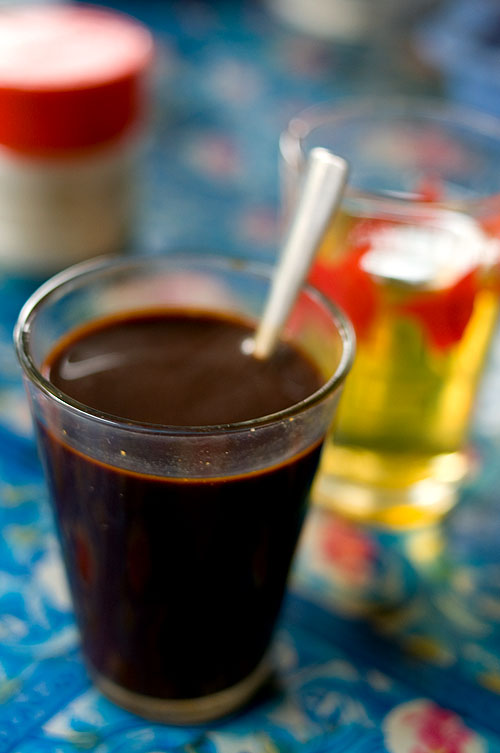 It's by no means the best coffee in the world, and often the amount of sweetened condensed milk is enough to give a diabetic nightmares, but the combination of product and place makes Lao coffee a mighty satisfying brew.
It's by no means the best coffee in the world, and often the amount of sweetened condensed milk is enough to give a diabetic nightmares, but the combination of product and place makes Lao coffee a mighty satisfying brew.